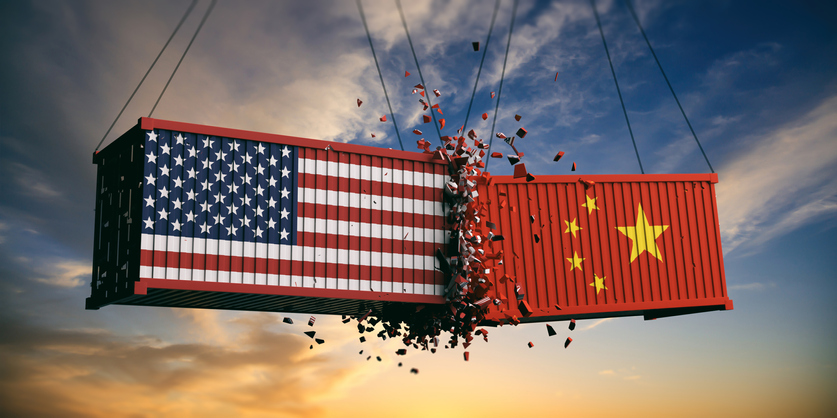China’s economy has been dull for years and now US-China economic relations, hype aside, are dull too. The Biden administration today announced a tariff review basically repeating Trump administration actions. The review rightly notes Trump’s actions didn’t accomplish much due to China’s responses. Yet this round from the US is just a bit more of the same thing. Trade policy toward China remains largely for show.
In 2017, citing Section 301 of the 1974 Trade Act, the Trump administration investigated the impact of the PRC’s policies and practices concerning technology and intellectual property. Spoiler: they’re bad. Broad tariffs were the strange solution, enacted with no regard to whether Chinese producers hit by tariffs benefited from predatory policies and practices.
Tariffs were applied in 2018 and 2019. In 2017, American goods imports—the ones soon to be hit by tariffs—were $506 billion. In 2022, with the Biden administration not touching those duties, imports were $537 billion. In 2017, overall American goods imports were $2.36 trillion and in 2022 they were $3.27 trillion. What was the point of this again?
The trend did reverse in 2023. Overall US goods imports fell $160 billion, mostly because those from China fell $109 billion. Imports from the PRC fell a bit more in the first quarter of 2024 while imports from the rest of world rose $10 billion. But the last tariff hike was in 2019. Other factors explain the import drop. Beijing lifted zero-Covid restrictions, nothing much happened, and China’s economy is seen as fading for the long term.
Direct goods imports from the PRC have generally underperformed the rest of the world since 2018, growing more slowly or in 2023, shrinking more quickly. But indirect imports have risen. With the PRC’s fade, companies realized they should diversify, Chinese companies included. They now use third countries to export to the US, as do American firms and everyone else.
A major incentive for this is Trump tariffs didn’t address the different paths by which Chinese-made goods reach the US. One path in the news now is to report shipments as so small in value (“de minimis”) that they escape tariffs. De minimis shipments aren’t well monitored, but their raw number climbed sharply from 2018 through early 2024, and China generates the majority.
Another tactic to avoid tariffs is transshipment: producing a good mostly or entirely in China and then shipping it via another country. Such a good is labeled as being from Vietnam or Canada, say, and doesn’t face the same tariffs. Transshipment and de minimis together make for very quick and, unless countered, very powerful means of avoiding tariffs.
Much slower but more difficult to counter is investment in third countries. China can invest to make goods elsewhere before exporting to the US, often using inputs from the PRC but doing the real work in a host nation—a factory rather than a transshipment warehouse. There’s discussion of Chinese investments in Mexico; to date, these are mostly just announcements. In two years, however, they could matter a good deal.
New Biden administration tariffs cover only $18 billion in imports. They are largely preemptive—looking to block future electric vehicle (components), semiconductors, and other products targeted by PRC industrial policy and its long-standing anticompetitive practices. Such practices have repeatedly created past oversupply in China, culminating in a flood of PRC exports priced below market.
On top of low import volumes now, some tariffs aren’t due until 2026. Is the Biden administration using this time to address de minimis and transshipment and consider China-owned factories in third countries? Umm, no? Today’s documents don’t address these matters. Future documents are supposed to, but three years is more than enough time to craft complete policies. In 2025, China will have even more extensive workarounds and the US may only have pronouncements.
Former Trump administration officials have recognized their mistake in allowing such workarounds but proposed high duties for Chinese vehicles made in Mexico and a 10 percent overall tariff. Neither makes sense. One singles out Mexico when China can easily produce elsewhere, and the second punishes dozens of innocent countries while simultaneously being barely noticeable for Chinese enterprises.
An electoral tariff race—25, no 60, no 100 percent—is meaningless unless de minimis and transshipment restrictions are offered, with harsh sanctions for repeated violations. PRC investment in third countries is harder to address, but Chinese abuse might be deterred by tariff-rate quotas that allow goods from third countries at low tariffs that then hike sharply when a quota is reached. These kinds of steps would be more than theater.
Originally published by the American Enterprise Institute. Republished with permission.
For more from Budget & Tax News.
For more public policy from The Heartland Institute.
